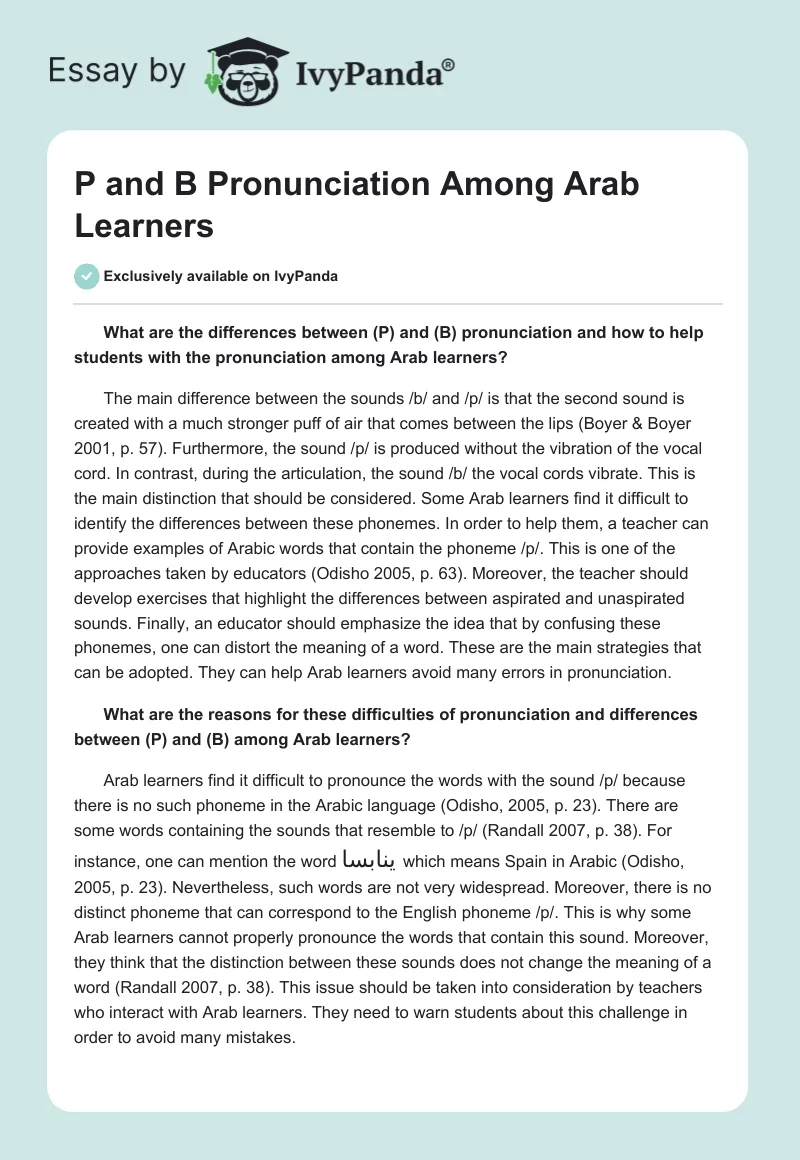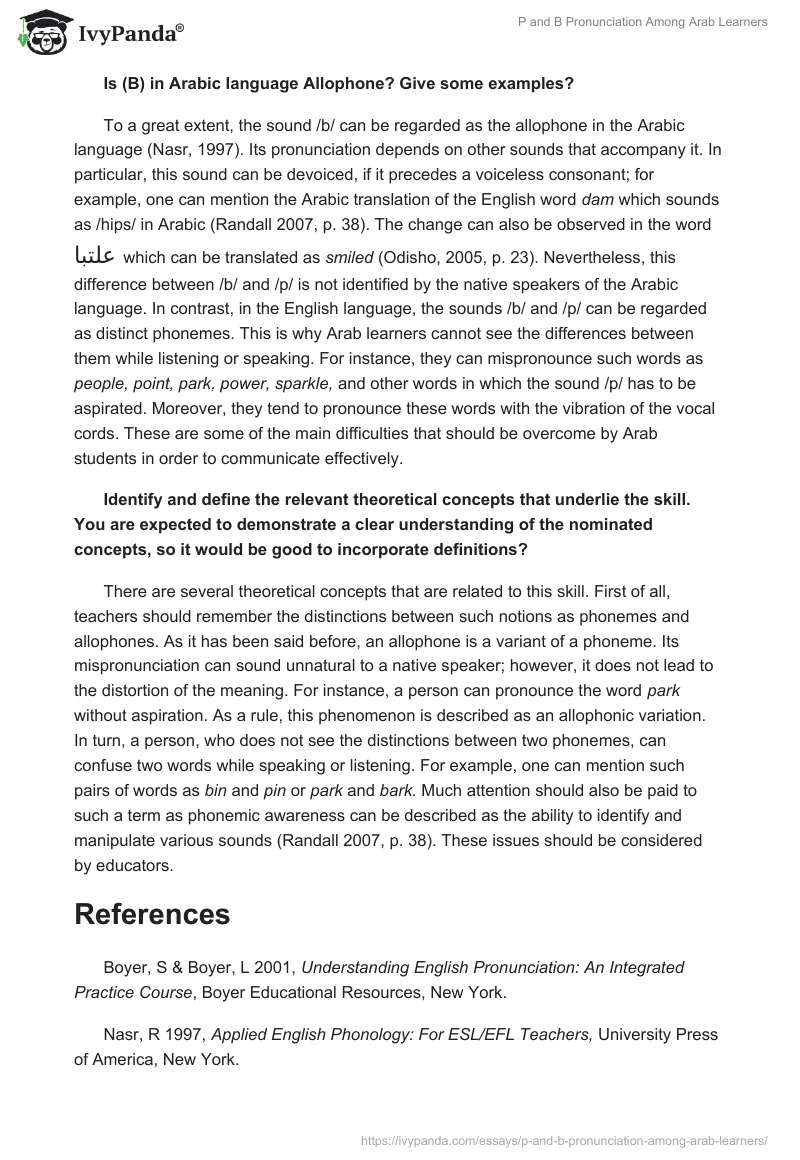What are the differences between (P) and (B) pronunciation and how to help students with the pronunciation among Arab learners?
The main difference between the sounds /b/ and /p/ is that the second sound is created with a much stronger puff of air that comes between the lips (Boyer & Boyer 2001, p. 57). Furthermore, the sound /p/ is produced without the vibration of the vocal cord. In contrast, during the articulation, the sound /b/ the vocal cords vibrate. This is the main distinction that should be considered. Some Arab learners find it difficult to identify the differences between these phonemes. In order to help them, a teacher can provide examples of Arabic words that contain the phoneme /p/. This is one of the approaches taken by educators (Odisho 2005, p. 63). Moreover, the teacher should develop exercises that highlight the differences between aspirated and unaspirated sounds. Finally, an educator should emphasize the idea that by confusing these phonemes, one can distort the meaning of a word. These are the main strategies that can be adopted. They can help Arab learners avoid many errors in pronunciation.
What are the reasons for these difficulties of pronunciation and differences between (P) and (B) among Arab learners?
Arab learners find it difficult to pronounce the words with the sound /p/ because there is no such phoneme in the Arabic language (Odisho, 2005, p. 23). There are some words containing the sounds that resemble to /p/ (Randall 2007, p. 38). For instance, one can mention the word ينابسا which means Spain in Arabic (Odisho, 2005, p. 23). Nevertheless, such words are not very widespread. Moreover, there is no distinct phoneme that can correspond to the English phoneme /p/. This is why some Arab learners cannot properly pronounce the words that contain this sound. Moreover, they think that the distinction between these sounds does not change the meaning of a word (Randall 2007, p. 38). This issue should be taken into consideration by teachers who interact with Arab learners. They need to warn students about this challenge in order to avoid many mistakes.
Is (B) in Arabic language Allophone? Give some examples?
To a great extent, the sound /b/ can be regarded as the allophone in the Arabic language (Nasr, 1997). Its pronunciation depends on other sounds that accompany it. In particular, this sound can be devoiced, if it precedes a voiceless consonant; for example, one can mention the Arabic translation of the English word dam which sounds as /hips/ in Arabic (Randall 2007, p. 38). The change can also be observed in the word علتبا which can be translated as smiled (Odisho, 2005, p. 23). Nevertheless, this difference between /b/ and /p/ is not identified by the native speakers of the Arabic language. In contrast, in the English language, the sounds /b/ and /p/ can be regarded as distinct phonemes. This is why Arab learners cannot see the differences between them while listening or speaking. For instance, they can mispronounce such words as people, point, park, power, sparkle, and other words in which the sound /p/ has to be aspirated. Moreover, they tend to pronounce these words with the vibration of the vocal cords. These are some of the main difficulties that should be overcome by Arab students in order to communicate effectively.
Identify and define the relevant theoretical concepts that underlie the skill. You are expected to demonstrate a clear understanding of the nominated concepts, so it would be good to incorporate definitions?
There are several theoretical concepts that are related to this skill. First of all, teachers should remember the distinctions between such notions as phonemes and allophones. As it has been said before, an allophone is a variant of a phoneme. Its mispronunciation can sound unnatural to a native speaker; however, it does not lead to the distortion of the meaning. For instance, a person can pronounce the word park without aspiration. As a rule, this phenomenon is described as an allophonic variation. In turn, a person, who does not see the distinctions between two phonemes, can confuse two words while speaking or listening. For example, one can mention such pairs of words as bin and pin or park and bark. Much attention should also be paid to such a term as phonemic awareness can be described as the ability to identify and manipulate various sounds (Randall 2007, p. 38). These issues should be considered by educators.
References
Boyer, S & Boyer, L 2001, Understanding English Pronunciation: An Integrated Practice Course, Boyer Educational Resources, New York.
Nasr, R 1997, Applied English Phonology: For ESL/EFL Teachers, University Press of America, New York.
Odisho, E 2005, Techniques of Teaching Comparative Pronunciation in Arabic and English, Gorgias Press LLC, London.
Randall, M 2007, Memory, Psychology and Second Language Learning, John Benjamins Publishing, New York.


